Articles & Step By Step Tutorials
Learn new design styles and discover new techniques with these articles from Floral Focus magazines, and step by step tutorials.
Freestanding
by Roseanne Armstrong
Flair definition: Designed to be artistically pleasing, well balanced from all angles with interest dispersed over the whole, and able to be viewed all around. May be staged on a table, an elevation or from the floor.
1: Able to be viewed all around, interesting from any angle. Interest is created by the use of varying forms, colour, rhythm, texture and space.
2: Balance - actual and visual apparent from all angles.
3: While there may be a dominant area in the design enough interest should be created throughout to balance the design all around. Dividing the design into thirds, with interest given to each third may assist when introducing freestanding designs.
4: Unity with plant material and colour is essential.
5: Consider quantity, density, texture and colour.
6: Repetition of lines, form and colour give rhythm.
7: Use the allocated space correctly - don't over or under fill. Consider the space as a cube.
8: Balance is more often asymmetrical than symmetrical,
Free-Standing from the floor:
When a schedule states free-standing from the floor that is exactly what is expected, the design should come from the floor and use the allocated space correctly.
Free-standing from the floor should make you want to walk around and view the entire design. The eye travels to points of interest throughout the design.
Staging:
There are many options available to the designer for the staging of freestanding designs from the floor. Whatever is chosen must be an integral part of the design and should not dominate.
A stand or object that is used as an elevation and is not an integral part will be down pointed.
Proportion and the application of the Golden Mean Section are beneficial as the Golden Section applies to areas and volumes. The 'Principles of Floral Design' by Gregor Lersch has excellent explanations of Proportion.
Unity:
'From every view a successful design holds together in UNITY and interest.
All sides will not carry equal emphasis however. There will be varying areas of greater or lesser attraction, bound together by actual lines or directional emphasis to give the eye a way of entering and moving around in the space of the design from different angles'
The Encyclopedia of Judging and Exhibiting by Esther Veramae Hamel. Page 330.
A successful design is where every part contributes to the whole.
The Art Objectives of Beauty, Harmony and Expression should be evident by the designer's skilful composition.
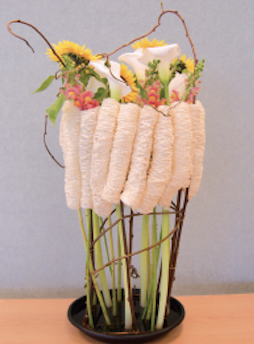
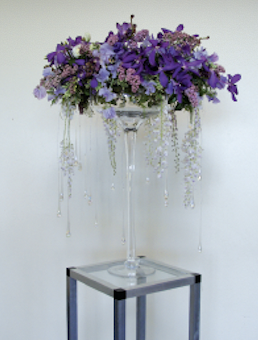
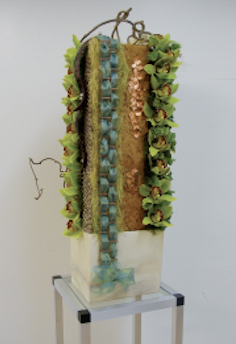
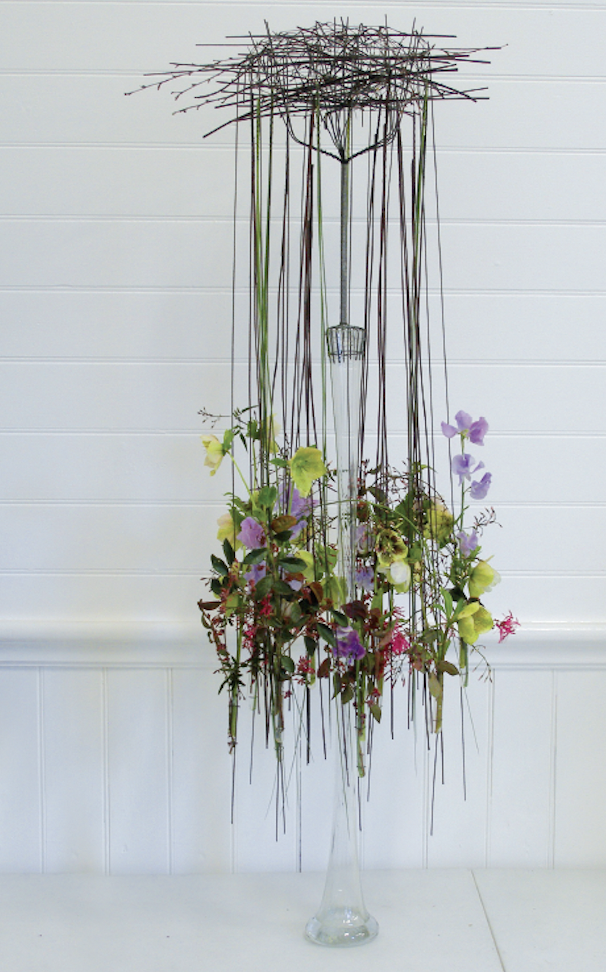
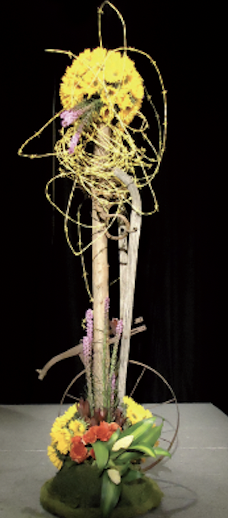
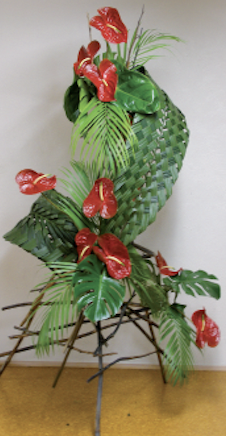
Categories
- Step By Step Tutorials
- Colour Tutorials
- Techniques Tutorials
- Innovative Design Tutorials
- Styles Tutorials







